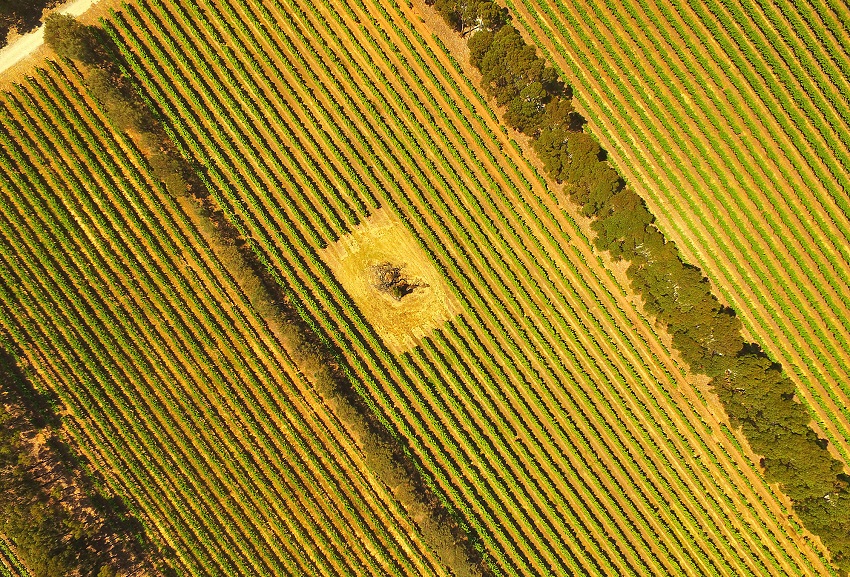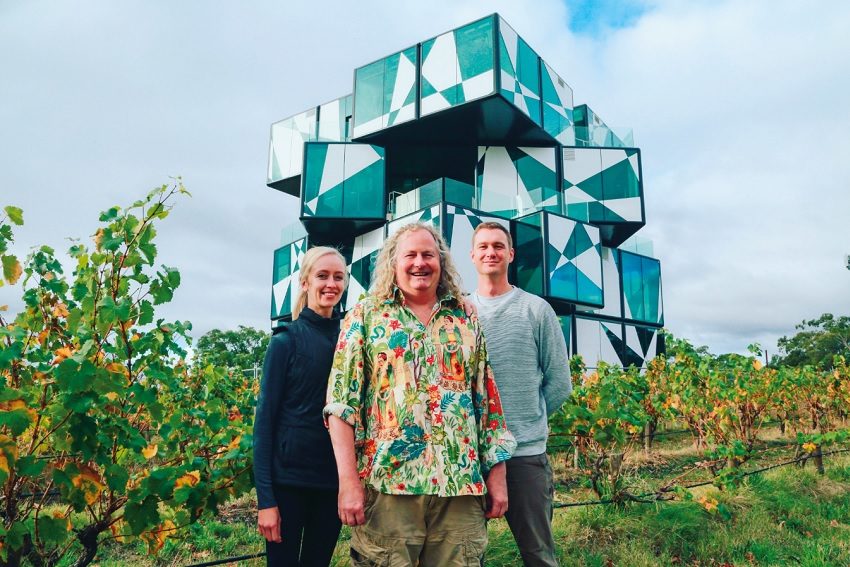Just how the myriad and interacting influences of geology, topography, climate and aspect work to produce their magic is not quite so clear. Debates over concepts such as “minerality” rage on: can the characteristics of minerals in vineyard soil be directly transferred by the vine into grape flavours? Plant scientists say no, but it hasn’t stopped the odd winemaker dropping rocks into wine vats just to see.
Nonetheless, the variations that derive from terroir are a driving force behind the very existence of wine regions – when your vineyards can claim distinctive nuances in the flavours of their grapes, faithfully capturing the local characters becomes the central quest of the winemaker, as well as a compelling selling point.
The Coonawarra, South Australia’s easternmost wine region, has enjoyed a national and international reputation for its cabernet-sauvignon since the canny David Wynn threw his weight behind the area’s dwindling fortunes in the 1950s. Wynn recognised – and advertised – the benefits of the maritime-related cool climate and promoted the profile of red clay soil over limestone as a perfect medium for growing wine-grapes.
A pioneer in promoting the concept of terroir, Wynn was the first to publicise a wine region not only by name but by map; the Wynn’s Coonawarra Estate back-labels were emblazoned with the cigar-shaped patch of terra rossa that would become an instantly recognisable emblem of elegant cabernet-sauvignon.

Hypervision Creative / Shutterstock
A decade later it was David Wynn, yet again, who shrewdly surmised the suitability of South Australia’s higher, cooler regions in realising the promise of locally grown chardonnay: he planted the State’s first vines of the variety high on the Eden Valley ridge in the late 1960s. And while Eden Valley had been an enclave for the white grapes of Barossa winemakers since the 19th century, the real heir of Wynn’s initiative has been another much younger region: the Adelaide Hills. It has become undeniable in recent years that numerous Hills subregions have the capacity to produce exceptional and distinctive chardonnay, as well as pinot noir. The Hills last year trumpeted the virtues of its terroir in the Hot 100 SA Wines, with wines made from Adelaide Hills fruit occupying an emphatic eight of the competition’s top ten spots.
Chester Osborn of d’Arenberg is one who believes that thanks to the singular fruit characters arising from Hills terroir, its chardonnays have the potential to be among the variety’s very best, and not just in Australia.
 Chester Osborn (centre) at d’Arenberg
Chester Osborn (centre) at d’Arenberg
“The
great thing the Adelaide Hills fruit has is a slightly passionfruit, grapefruit
lift in amongst the Granny Smith apple character, and it really stands out
compared to other regions around Australia or around the world,” Osborn says.
Of course, the Adelaide Hills is not one terroir but many. Just as in Burgundy, where one vineyard can be venerated as the source of a vaunted grand cru while a near neighbour is cast as the producer of a humble village wine, there are constant and subtle changes of geology, of elevation and of microclimate throughout the Adelaide Hills that lead to differences in the character and quality of the grapes they produce. The region extends for some 50 kilometres from end to end, from the comparative warmth of Gumeracha in the north through the high sites of Lenswood, Piccadilly and Echunga to the lower slopes of Kuitpo in the south.
Viticulturist and winemaker Mark Gilbert grows chardonnay in his Sophie’s Hill vineyard, perched along a ridge between the towns of Echunga and Meadows towards the southern end of the Mount Lofty range. The fruit goes into his own Karrawatta label, Anth’s Garden Chardonnay, and he also sells to other wineries, including Shottesbrooke – their Single Vineyard Series Chardonnay was among last year’s Hot 100 top ten.
Gilbert says that given the long sweep of the Adelaide Hills, chardonnay is grown in numerous subregions of terroir that vary not only from each other, but within each other. His own vineyard is high and cool at over 550 metres, and geologically comprises free-draining sandy loam over clay containing fragments of shale and ironstone. The chardonnay plantings run east-west, facing south to avoid direct sunlight: Gilbert is dedicated to creating a chardonnay at the leaner, more delicate end of the style continuum, with fruit flavours in the pineapple, green apple and white peach range rather than the passionfruit. Yields are kept low, at around five to six tonnes a hectare. Gilbert does use malolactic fermentation and also employs French oak in large barrels but wants to create a wine that is subtle and long-lived, and that also shows off its fruit and, importantly, its acid.
He agrees that the Adelaide Hills is an outstanding region for chardonnay but says given the preference towards red wine in Australia and in the booming Chinese market, it hasn’t always been easy for growers to sell. But he also thinks things are looking more buoyant, and he is hopeful that the trend for the emergence of new labels from small Hills producers will continue. And while he admits that the “long, skinny region” isn’t the easiest to navigate, Gilbert says there are few better ways to experience the vagaries of terroir than visiting a few Adelaide Hills cellar doors.
What’s keeping you?
This article originally appeared in the Hot 100 Wines South Australia 2019/20 publication
Get the latest from The Adelaide Review in your inbox
Get the latest from The Adelaide Review in your inbox